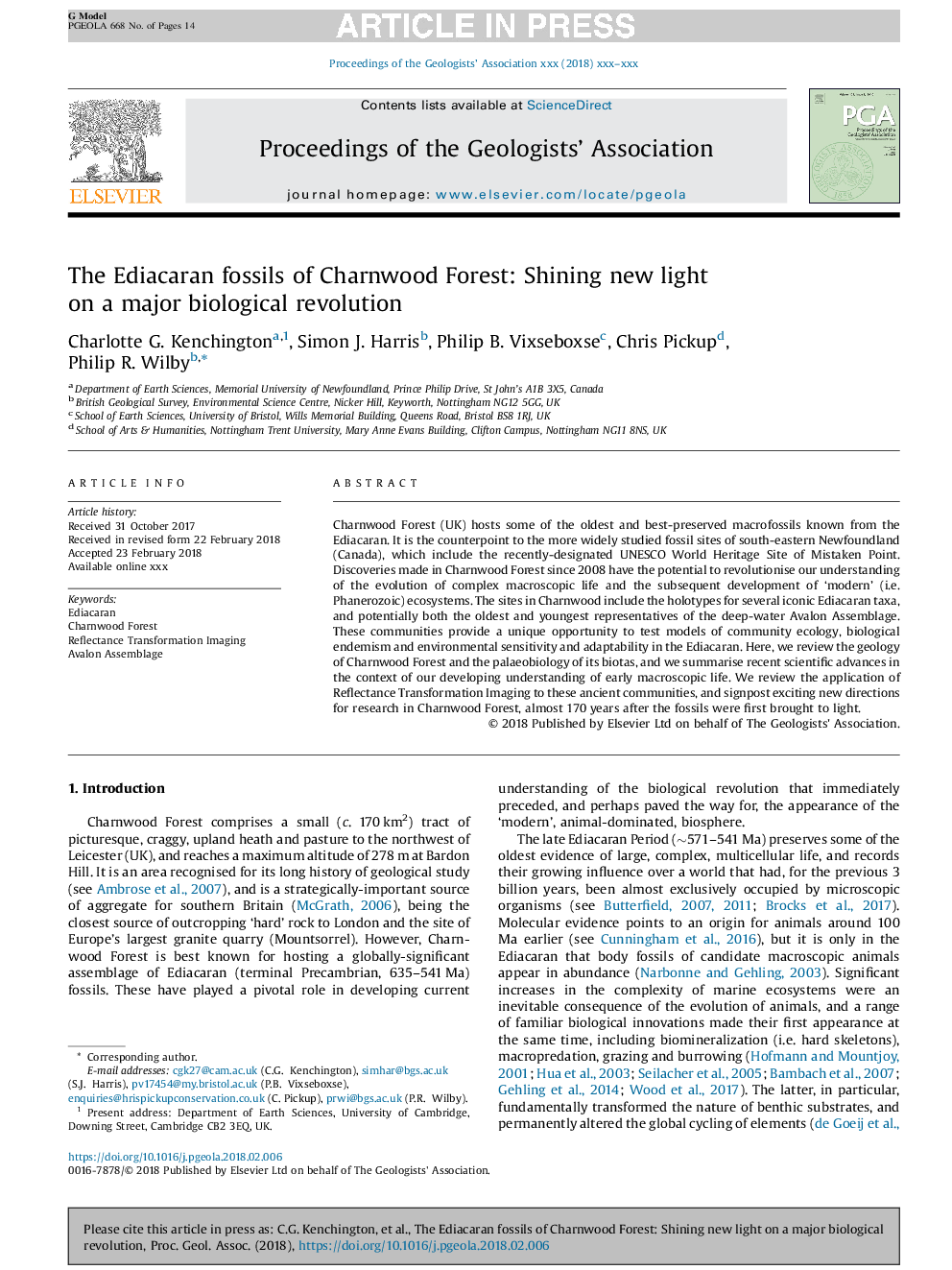| Article ID | Journal | Published Year | Pages | File Type |
|---|---|---|---|---|
| 8914569 | Proceedings of the Geologists' Association | 2018 | 14 Pages |
Abstract
Charnwood Forest (UK) hosts some of the oldest and best-preserved macrofossils known from the Ediacaran. It is the counterpoint to the more widely studied fossil sites of south-eastern Newfoundland (Canada), which include the recently-designated UNESCO World Heritage Site of Mistaken Point. Discoveries made in Charnwood Forest since 2008 have the potential to revolutionise our understanding of the evolution of complex macroscopic life and the subsequent development of 'modern' (i.e. Phanerozoic) ecosystems. The sites in Charnwood include the holotypes for several iconic Ediacaran taxa, and potentially both the oldest and youngest representatives of the deep-water Avalon Assemblage. These communities provide a unique opportunity to test models of community ecology, biological endemism and environmental sensitivity and adaptability in the Ediacaran. Here, we review the geology of Charnwood Forest and the palaeobiology of its biotas, and we summarise recent scientific advances in the context of our developing understanding of early macroscopic life. We review the application of Reflectance Transformation Imaging to these ancient communities, and signpost exciting new directions for research in Charnwood Forest, almost 170 years after the fossils were first brought to light.
Keywords
Related Topics
Physical Sciences and Engineering
Earth and Planetary Sciences
Geology
Authors
Charlotte G. Kenchington, Simon J. Harris, Philip B. Vixseboxse, Chris Pickup, Philip R. Wilby,
